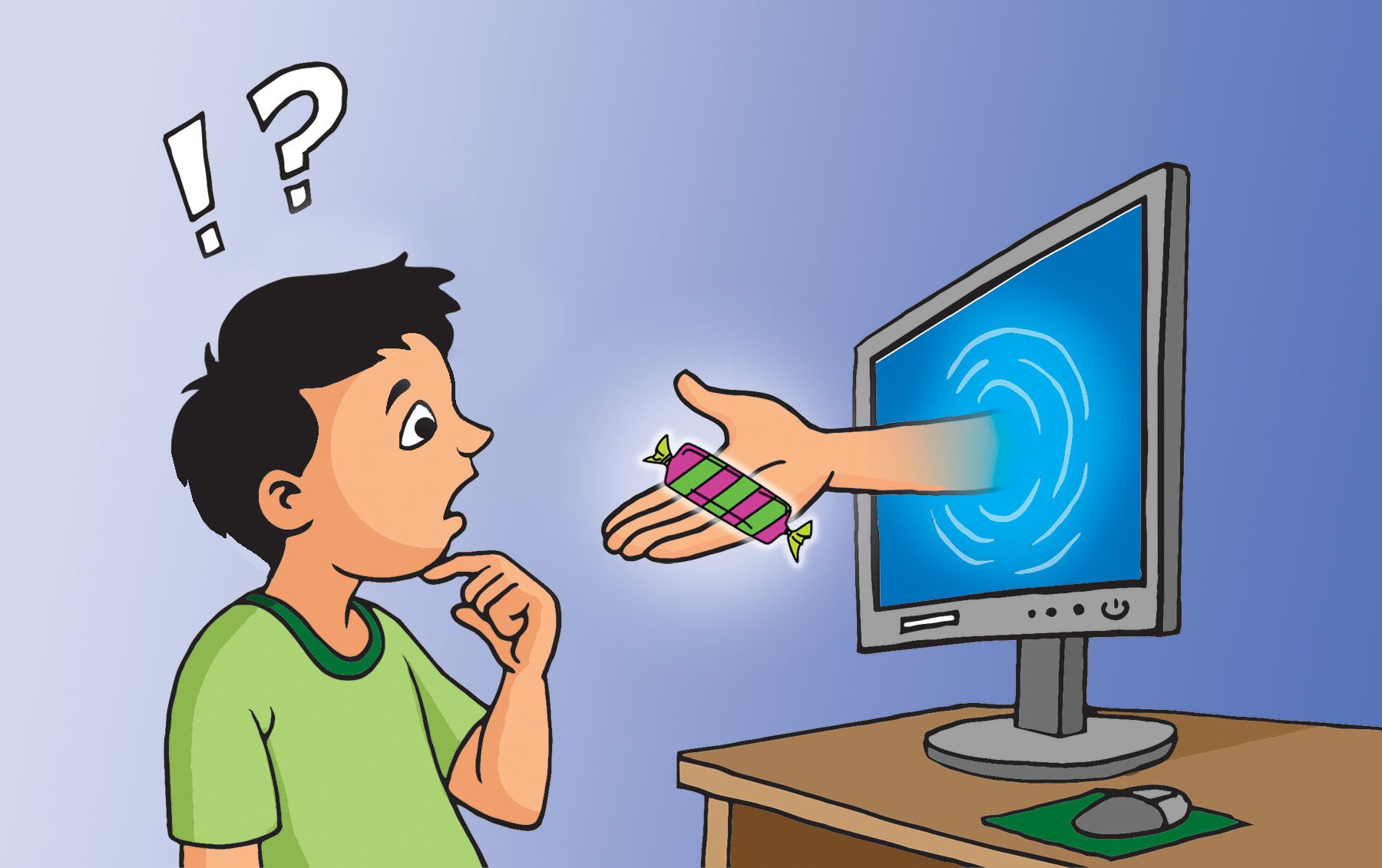Cyber Grooming
Cyber grooming is the process of ‘befriending’ a young person online “to facilitate online sexual contact and/or a physical meeting with them with the goal of committing sexual abuse”.
Cyber grooming is when someone (often an adult) befriends a child online and builds an emotional connection with future intentions of sexual abuse, sexual exploitation or trafficking. The main goals of cyber grooming are: to gain trust from the child, to obtain intimate and personal data from the child (often sexual in nature—such as sexual conversations, pictures, or videos) in order to threaten and blackmail for further inappropriate material.
Perpetrators often take on fake identities of a child or teen and approach their victims in child-friendly websites, leaving children vulnerable and unaware of the fact that they have been approached for purposes of cyber grooming. Perpetrators often start conversations with inconspicuous and general questions about age, hobbies, school, family. They also attract children with gifts, offers for gift or guidance and favours to children. After gaining trust, they often ask the child to share nude photos or videos and get involved in sexually abusive conversations. Many of them also want to meet the child in a lonely place for the purpose of abuse. However, the children and young people can also unknowingly initiate the grooming process when they partake in websites or forums with lucrative offers such as money in exchange for contact details or intimate photos of themselves.
The anonymity and accessibility of digital technology allows groomers to approach multiple children at one time, therefore exponentially multiplying the cases of cyber grooming. A 2012 UK-based survey revealed that 42 percent of children (ages 11-16 years old) received online attachments by email from strangers. Similarly, in a different study consisting of 264 grooming cases reported that: “suspects requested sexual images in 93.4 percent of cases, in 24 percent of the cases the young person was threatened with the distribution of existing images or other harm; the young person actually sent sexual images in 30 percent of the cases; and in 35.5 percent of cases the suspect sent the victim sexual images of themselves or requested the young person to interact by webcam” (ICMEC). On the contrary, there are only a few cases of convictions for the crime of cyber grooming globally, as two-thirds of the world’s countries have no specific laws regarding cyber grooming of children.
The cyber grooming process itself can happen quickly, however the negative impact on the victim can be long-term. In addition to feeling violated and betrayed, a child who has been groomed may feel responsible for or deserving of the abuse, leading to self-blame and low self-esteem. Thus, it is crucial not only to raise awareness about the dangers of cyber grooming and safe practices of internet technologies but also for international legislations to criminalize all types of child grooming. Cyber grooming is often considered to be a gateway to more serious offenses of sexual exploitation of children.
At least three distinct types of groomer exist: 'Distorted Attachment'; 'Adaptable Offender'; and 'Hyper-Sexual'.
Distorted Attachment: A groomer who believes he is in a romantic and consenting relationship with the young person he is grooming. Unlike what most people think about groomers, this particular offender reveals his identity to the victim and uses no indecent images of children. He spends a great deal of time becoming friendly with his victim before they meet face to face.
Adaptable Offender: Uses many identities online, adapting his grooming style to suit his purposes. This offender may or may not use indecent images, but he will view the person he is grooming as being appropriate for sexual abuse. It is not his objective to always meet the young person in real life.
Hyper-Sexual Offender: Focuses on sharing and securing extensive numbers of indecent images of children. This offender will be part of an online network of sexual offenders, but who has very little, if no, interest at all to meet his victim face to face. The researchers say this type of groomer will likely use various identities or a sexually explicit profile name and photo to make fast contact with a young person.
Prevention and Protection from Cyber Grooming
Children, young people, parents and guardians can play important roles in preventing cyber grooming and protecting children and young people online. They can take the following measures for preventing and protecting children.
Children and Young People
· Avoid interacting with online strangers or people not known very well to you.
· Do not accept friend requests from people not known very well.
· Do not share private and confidential information publicly.
· Check and set privacy settings on websites and platforms regularly accessed.
· Do not accept gifts or offers from strangers met online.
· Block and report anyone who tries to abuse you online.
· Tell parents, guardians or trusted adult/s about any bad experiences you have online
· Do not visit untrusted sites or use anonymous video chat and live streaming apps.
· Know where to report online abuse and exploitation
Parents and Guardians
· Spend one-to-one time with children and help them to use the internet safely.
· Teach children about online dangers. Share measures on safe internet use, including avoiding providing personal information to unknown sites/people online, frequently changing passwords, and being careful while downloading online content.
· Monitor children's online activities and who they are communicating with. Be alert to signs of distress. If children appear withdrawn, upset, secretive or obsessed with their online activities, it could be an indication for an issue they are facing online (e.g., online sexual abuse and exploitation and cyberbullying).
· Listen to children without judgment and guide them towards a better solution, rather than blaming them.
· Report online abuse cases to the police, and block abusers on social media platforms
References:
Marchenko. “Web of Darkness: Groomed, Manipulated, Coerced, and Abused In Minutes.” Biometrica Systems Inc, Nov. 2017, biometrica.com/icmec-online-grooming/
NSPCC. “Grooming.” NSPCC, www.nspcc.org.uk/preventing-abuse/child-abuse-and-neglect/grooming/.

